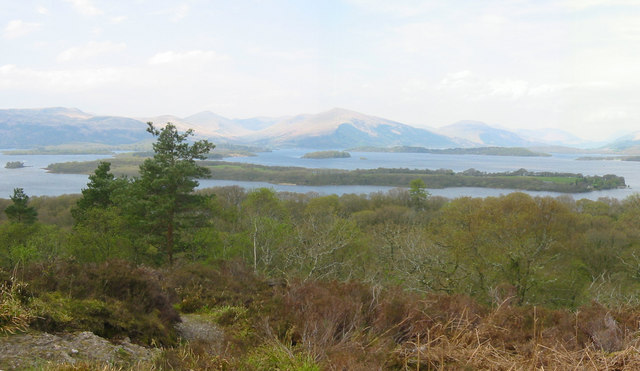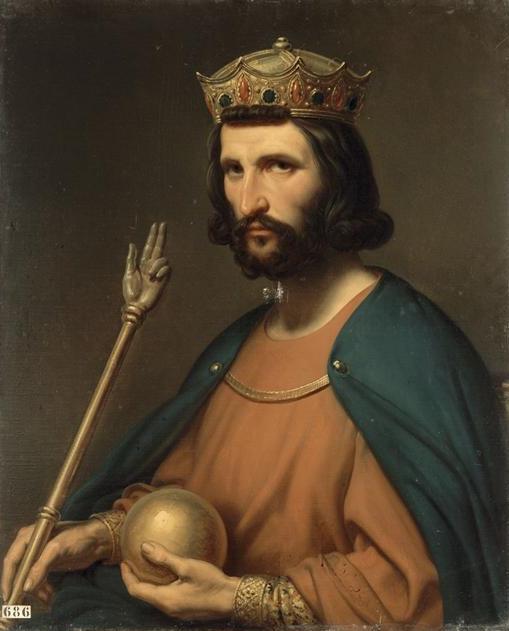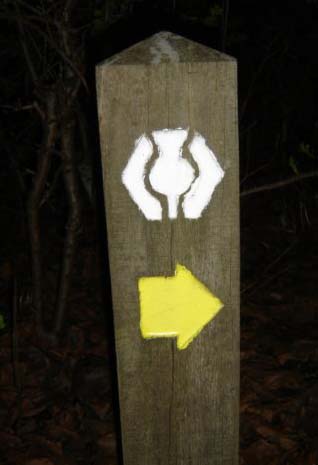|
Fillan
Saint Fillan, Filan, Phillan, Fáelán (Old Irish) or Faolán (modern Gaeilge & Gàidhlig) is the name of an eighth century monk from Munster, who having studied at Taghmon Abbey, traveled to Scotland and settled at Strath Fillan. Name The name Fillan probably means "little wolf" in Irish / Gaeilge, being formed on a diminutive of ''faol'', an old word for the animal. In Irish/Gaeilge the name Faolán is pronounced 'Fway-lawn'. Life St. Fillan of Munster, the son of Feriach, grandson of Cellach Cualann, King of Leinster, received the monastic habit at the Abbey of Fintán of Taghmon in Wexford and came to Scotland from Ireland in 717 as a hermit along with his Irish princess-mother St. Kentigerna, and his Irish prince-uncle St. Comgan. They settled at Loch Duich. After spending some time with his uncle Saint Comgan at Lochalsh, where Killilan (Kilfillan) bears his name, the saint devoted himself to the evangelization of the district of Perthshire round Strath Fillan, whic ... [...More Info...] [...Related Items...] OR: [Wikipedia] [Google] [Baidu] |
St Filan
Saint Fillan was a sixth-century Scottish monk active in Fife. His feast day is 20 June. Fillan of Pittenweem is not to be confused with the later Fillan of Munster, who settled at Strath Fillan. Fillan of Pittenweem worked in Aberdour, (where the parish church bears his name), as well as in Forgan. On the top of Dunfillan near Comrie was a rocky seat where, according to tradition, Fillan sat and gave his blessing to the country 'round. Up until the eighteenth century, there was a belief that sitting there could be beneficial for rheumatism of the back. A stone basin at the bottom the hill, was known as "Fillan's Spring", whose water was said to cure sore eyes. According to historian and antiquary William Forbes Skene, the village of St Fillans, on the eastern end of Loch Earn, takes its name from him. Fillan of Pittenweem died at the ''disert'' of Tyrie near Kinghorn St Fillan's Cave St Fillan's Cave, situated in Cove Wynd, Pittenweem has long been associated with Filla ... [...More Info...] [...Related Items...] OR: [Wikipedia] [Google] [Baidu] |
Strath Fillan
Strath Fillan ( gd, Na Sraithibh) is a strath in west Perthshire named after an 8th-century Irish hermit monk later canonised Saint Fillan. Located in the region was once Strath Fillan Priory, an early 14th century foundation, later destroyed by the Campbells in the name of Calvinism. The Strath stretches from Bridge of Orchy () to Crianlarich () and has long been a major route through the highlands; the A82 road, the West Highland Line, and the West Highland Way long-distance footpath all follow the strath. The Strathfillan Community Development Trust was formed in 1997. It provides low cost rental housing for local residents and manages amenity woodland. Fillan Saint Fillan, Filan, Phillan, Fáelán (Old Irish) or Faolán (modern Gaeilge & Gàidhlig) is the name of an eighth century monk from Munster, who having studied at Taghmon Abbey, traveled to Scotland and settled at Strath Fillan. Name The na ... Valleys of Argyll and Bute Valleys of Stirling (council area) ... [...More Info...] [...Related Items...] OR: [Wikipedia] [Google] [Baidu] |
Perthshire
Perthshire ( locally: ; gd, Siorrachd Pheairt), officially the County of Perth, is a historic county and registration county in central Scotland. Geographically it extends from Strathmore in the east, to the Pass of Drumochter in the north, Rannoch Moor and Ben Lui in the west, and Aberfoyle in the south; it borders the counties of Inverness-shire and Aberdeenshire to the north, Angus to the east, Fife, Kinross-shire, Clackmannanshire, Stirlingshire and Dunbartonshire to the south and Argyllshire to the west. It was a local government county from 1890 to 1930. Perthshire is known as the "big county", or "the Shire", due to its roundness and status as the fourth largest historic county in Scotland. It has a wide variety of landscapes, from the rich agricultural straths in the east, to the high mountains of the southern Highlands. Administrative history Perthshire was an administrative county between 1890 and 1975, governed by a county council. Initially, Perths ... [...More Info...] [...Related Items...] OR: [Wikipedia] [Google] [Baidu] |
Kentigerna
Caintigern (died 734), or Saint Kentigerna, was a daughter of Cellach Cualann, King of Leinster. Her feast is listed in the ''Aberdeen Breviary'' for 7 January. Her husband is said to have been Feriacus regulus of Monchestre, who possibly is the same person as Feradach, grandson of Artúr of Dál Riata. Along with her brother St. Comgán and her son St. Fillan (Fáelán), the widowed Caintigern is said to have lived as a hermit, first in Strath Fillan, then in the Lennox, on the island of Inchcailloch on Loch Lomond. References External links * http://medievalscotland.org/kmo/AnnalsIndex/Feminine/Caintigern.shtml Sources * Alan Orr Anderson Alan Orr Anderson (1879–1958) was a Scottish historian and compiler. The son of Rev. John Anderson and Ann Masson, he was born in 1879. He was educated at Royal High School, Edinburgh, and the University of Edinburgh. In 1908, after five ..., ''Early Sources of Scottish History A.D 500–1286'', volume 1. Reprinted with ... [...More Info...] [...Related Items...] OR: [Wikipedia] [Google] [Baidu] |
Inchaffray Abbey
Inchaffray Abbey was situated by the village of Madderty, midway between Perth and Crieff in Strathearn, Scotland. The only traces now visible are an earth mound and some walls on rising ground which once (before drainage) formed an island where the abbey once stood (the surrounding marshes known for eels). History Folk etymology has the name Inchaffray taken from the Gaelic ''innis abh reidh'' (island of the smooth water), but the earliest attested form of the name is the Latin ''Insula missarum'' (island of the masses), mass in Gaelic being ''oifrend'' and Welsh ''offeren'', thus island of the offerings. A charter of Jonathan, Bishop of Dunblane, refers to the place "qui uocatur lingua Scottica Inche Affren" (="which is called in the Gaelic language ''Inche Affren''") and comparative usage shows that ''Insula Missarum'' was taken as a translation, e.g. "Sancti Johannis evangeliste de Inchefrren" and "sancto Johanni apostolo de Insula Misserum". A priory was created on ... [...More Info...] [...Related Items...] OR: [Wikipedia] [Google] [Baidu] |
Munster
Munster ( gle, an Mhumhain or ) is one of the provinces of Ireland, in the south of Ireland. In early Ireland, the Kingdom of Munster was one of the kingdoms of Gaelic Ireland ruled by a "king of over-kings" ( ga, rí ruirech). Following the Norman invasion of Ireland, the ancient kingdoms were shired into counties for administrative and judicial purposes. In later centuries, local government legislation has seen further sub-division of the historic counties. Munster has no official function for local government purposes. For the purposes of the ISO, the province is listed as one of the provincial sub-divisions of the State ( ISO 3166-2:IE) and coded as "IE-M". Geographically, Munster covers a total area of and has a population of 1,364,098, with the most populated city being Cork. Other significant urban centres in the province include Limerick and Waterford. History In the early centuries AD, Munster was the domain of the Iverni peoples and the Clanna Dedad fami ... [...More Info...] [...Related Items...] OR: [Wikipedia] [Google] [Baidu] |
Tyndrum
Tyndrum (; gd, Taigh an Droma) is a small village in Scotland. Its Gaelic name translates as "the house on the ridge". It lies in Strathfillan, at the southern edge of Rannoch Moor. Location and facilities Tyndrum is a popular tourist village, and a noted stop on the A82 for road travellers to refresh at the Green Welly Stop or one of the several other cafés and hotels. There is a filling station. The village is on the West Highland Way, and has a campsite, hotel, bunkhouse and bed and breakfasts to accommodate walkers. Overshadowed by Ben Lui, a Munro, Tyndrum is built over the battlefield where Clan MacDougall defeated Robert the Bruce in 1306 CE, and supposedly took from him the Brooch of Lorn. Railways The village is notable as a junction of transport routes. The West Highland Line railway from Glasgow splits approximately to the south at Crianlarich, with one branch heading to Fort William and the other to Oban. Tyndrum has a station on each branch: Upper Tyn ... [...More Info...] [...Related Items...] OR: [Wikipedia] [Google] [Baidu] |
Canons Regular
Canons regular are priests who live in community under a rule ( and canon in greek) and are generally organised into religious orders, differing from both secular canons and other forms of religious life, such as clerics regular, designated by a partly similar terminology. Preliminary distinctions All canons regular are to be distinguished from secular canons who belong to a resident group of priests but who do not take public vows and are not governed in whatever elements of life they lead in common by a historical Rule. One obvious place where such groups of priests are required is at a cathedral, where there were many Masses to celebrate and the Divine Office to be prayed together in community. Other groups were established at other churches which at some period in their history had been considered major churches, and (often thanks to particular benefactions) also in smaller centres. As a norm, canons regular live together in communities that take public vows. Their ear ... [...More Info...] [...Related Items...] OR: [Wikipedia] [Google] [Baidu] |
Robert I Of Scotland
Robert I (11 July 1274 – 7 June 1329), popularly known as Robert the Bruce (Scottish Gaelic: ''Raibeart an Bruis''), was King of Scots from 1306 to his death in 1329. One of the most renowned warriors of his generation, Robert eventually led Scotland during the First War of Scottish Independence against England. He fought successfully during his reign to regain Scotland's place as an independent kingdom and is now revered in Scotland as a national hero. Robert was a fourth great-grandson of King David I, and his grandfather, Robert de Brus, 5th Lord of Annandale, was one of the claimants to the Scottish throne during the " Great Cause". As Earl of Carrick, Robert the Bruce supported his family's claim to the Scottish throne and took part in William Wallace's revolt against Edward I of England. Appointed in 1298 as a Guardian of Scotland alongside his chief rival for the throne, John Comyn of Badenoch, and William Lamberton, Bishop of St Andrews, Robert resigne ... [...More Info...] [...Related Items...] OR: [Wikipedia] [Google] [Baidu] |
William The Lion
William the Lion, sometimes styled William I and also known by the nickname Garbh, "the Rough"''Uilleam Garbh''; e.g. Annals of Ulster, s.a. 1214.6; Annals of Loch Cé, s.a. 1213.10. ( 1142 – 4 December 1214), reigned as King of Scots from 1165 to 1214. His 48-year-long reign was the second longest in Scottish history, and the longest for a Scottish monarch before the Union of the Crowns in 1603. Early life William was born around 1142, during the reign of his grandfather King David I of Scotland. His parents were the king's son Henry and Ada de Warenne. William was around 10 years old when his father died in 1152, making his elder brother Malcolm the heir apparent to their grandfather. From his father, William inherited the Earldom of Northumbria. David I died the next year, and William became heir presumptive to the new king, Malcolm IV. In 1157, William lost the Earldom of Northumbria to Henry II of England. Reign Malcolm IV did not live for long, and upon his death ... [...More Info...] [...Related Items...] OR: [Wikipedia] [Google] [Baidu] |
Lay Abbot
Lay abbot ( la, abbatocomes, abbas laicus, abbas miles, ) is a name used to designate a layman on whom a king or someone in authority bestowed an abbey as a reward for services rendered; he had charge of the estate belonging to it, and was entitled to part of the income. The custom existed principally in the Frankish Empire from the eighth century until the ecclesiastical reforms of the eleventh. Background Numerous synods held in France in the sixth and seventh centuries passed decrees against this abuse of church property. The Merovingians had bestowed church lands on laymen, or at least allowed them their possession and use, though not ownership.Kirsch, Johann Peter. "Lay Abbot." The Catholic Encyclopedia Vol. 9. New York: Robert Appleton Company, 1910. 26 Jul. 2015 The Merovingian kings w ... [...More Info...] [...Related Items...] OR: [Wikipedia] [Google] [Baidu] |
West Highland Way
The West Highland Way ( gd, Slighe na Gàidhealtachd an Iar) is a linear long-distance route in Scotland. It is long, running from Milngavie north of Glasgow to Fort William in the Scottish Highlands, with an element of hill walking in the route. The trail, which opened in 1980, was Scotland's first officially designated Long Distance Route, and is now designated by NatureScot as one of Scotland's Great Trails. It is primarily intended as a long distance walking route, and whilst many sections are suitable for mountain biking and horseriding there are obstacles and surfaces that will require these users to dismount in places. It is managed by the West Highland Way Management Group (WHWMG) consisting of the local authorities for East Dunbartonshire, Stirling, Argyll and Bute and Highland, alongside the Loch Lomond and The Trossachs National Park Authority and NatureScot. About 120,000 people use the path every year, of whom about 36,000 walk the entire route. The pa ... [...More Info...] [...Related Items...] OR: [Wikipedia] [Google] [Baidu] |







